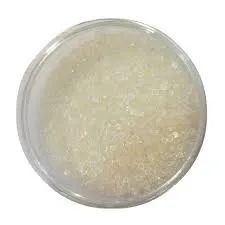The Function of Coagulation in Water Treatment
Water treatment is a vital process that ensures the availability of clean and safe water for consumption, agriculture, and industrial use. Among the various methods employed in water purification, coagulation stands out as a fundamental technique that significantly improves water quality. This article explores the function of coagulation in water treatment, its mechanisms, and its benefits.
Coagulation is the process by which fine suspended particles in water clump together to form larger particles, known as flocs. This is achieved by adding coagulants, which are chemicals that destabilize the charged particles in the water. Common coagulants include aluminum sulfate (alum), ferric chloride, and polyaluminum chloride. The addition of these substances neutralizes the charges on suspended particles, allowing them to aggregate into larger masses.
The Function of Coagulation in Water Treatment
The effectiveness of coagulation depends on several factors, including pH, temperature, and the nature of the impurities present. The pH level of the water is particularly crucial as it directly influences the solubility of coagulants and the charge of the particles. For instance, aluminum sulfate works best within a pH range of 6 to 8. Hence, operators often monitor and adjust the pH of water to optimize the coagulation process.
function of coagulation in water treatment

One of the major advantages of coagulation in water treatment is its ability to remove a wide range of contaminants. This includes suspended solids, bacteria, viruses, and organic matter. By reducing these impurities, coagulation not only enhances the aesthetic quality of water—in terms of color and turbidity—but also significantly lowers the risk of waterborne diseases. It acts as a pre-treatment step for subsequent purification processes such as filtration and disinfection, effectively increasing the overall efficiency of the treatment system.
Moreover, coagulation contributes to the settling of certain dissolved substances. In many cases, chemical coagulants can assist in precipitating certain dissolved organics and heavy metals, making them easier to filter out. For example, the removal of phosphorus through coagulation not only helps prevent eutrophication in natural water bodies but also fulfills regulatory standards for wastewater discharge.
While coagulation is highly effective, it is vital to maintain a balanced approach to its application. Overdosing of coagulants can lead to residual chemicals in treated water, which may prompt health concerns. Additionally, the disposal of captured flocs can pose environmental challenges if not managed properly. Therefore, ongoing research is directed at developing greener coagulants and refining methods to minimize chemical usage while maintaining treatment efficacy.
In conclusion, coagulation plays a crucial role in the water treatment process, promoting the aggregation of particles for effective removal and enhancing overall water quality. By understanding and optimizing the coagulation process, water treatment facilities can ensure the delivery of safe, clean water to populations, thereby fostering better health and environmental sustainability. As the demand for clean water continues to rise globally, the role of modern coagulation methods will only become more significant in addressing water quality challenges. As this field evolves, embracing innovation and sustainability in coagulation will be vital to safeguarding our most precious resource water.

